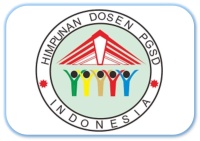Peningkatan Hasil Belajar Siswa Pada Pembelajaran IPA Menggunakan model Problem Based Learning di Sekolah Dasar
Abstract
This research is motivated by student learning outcomes are still low because the teacher has not invited students to find problems related to learning, the teacher has not maximally involved the ability of students to find information, data and facts needed to answer a problem. The purpose of this study is to describe the improvement of student learning outcomes by using the model of problem based learning in Class IV SD 14 Gadut Agam.
This research uses qualitative and quantitative approaches. This type of research is Classroom Action Research (CAR). The research subjects were 18th grade students of SD Negeri 14 Gadut, Agam Regency. The study was conducted in two cycles. The research design includes, (1) planning, (2) implementation, (3) observation / observation, and (4) reflection.
The results showed that there was an increase in: a) RPP cycle I with an average of 76.75% (enough), cycle II with an average of 85.7% (good), b) implementation on aspects of the first cycle teacher obtained an average of 72.91% (enough), cycle II obtained an average of 95% (very good), c) implementation of the aspects of students in the first cycle with an average of 70% (enough), cycle II obtained an average of 85% (good ), d) student learning outcomes in the first cycle obtained an average percentage of 75.94% (enough), the second cycle obtained an average percentage of 85.28% (good). So it can be concluded that learning science by using a model of problem based learning can improve student learning outcomes in grade IV SD 14 Gadut Agam.
Keywords: Natural Science Learning, Problem Based Learning Model, Learning Outcomes
This research uses qualitative and quantitative approaches. This type of research is Classroom Action Research (CAR). The research subjects were 18th grade students of SD Negeri 14 Gadut, Agam Regency. The study was conducted in two cycles. The research design includes, (1) planning, (2) implementation, (3) observation / observation, and (4) reflection.
The results showed that there was an increase in: a) RPP cycle I with an average of 76.75% (enough), cycle II with an average of 85.7% (good), b) implementation on aspects of the first cycle teacher obtained an average of 72.91% (enough), cycle II obtained an average of 95% (very good), c) implementation of the aspects of students in the first cycle with an average of 70% (enough), cycle II obtained an average of 85% (good ), d) student learning outcomes in the first cycle obtained an average percentage of 75.94% (enough), the second cycle obtained an average percentage of 85.28% (good). So it can be concluded that learning science by using a model of problem based learning can improve student learning outcomes in grade IV SD 14 Gadut Agam.
Keywords: Natural Science Learning, Problem Based Learning Model, Learning Outcomes
References
Arikunto, Suharsimi dkk. 2012. Penelitian Tindakan Kelas. Jakarta : PT. Bumi Aksara
Depdiknas. 2006. KTSP Jenjang Pendidikan Sekolah Dasar. Jakarta : Depdiknas
Fitria,Yanti. 2017. Efektivitas Capaian Kompetensi Belajar Siswa dalam Pembelajaran Sains di Sekolah Dasar. Jurnal Inovasi Pendidikan dan Pembelajaran Sekolah Dasar . 1(2): 40-41
Hosnan. 2014. Pendekatan Saintifik dan Kontekstual dalam Pembelajaran Abad 21 Kunci Sukses Implementasi Kurikulum 2013. Bogor : Ghalia Indonesia
Kusumah, Wijaya dan Dedi Dwitagama. 2012. Mengenal Penelitian tindakan Kelas. Jakarta : PT. Indeks
DOI: http://dx.doi.org/10.24036/e-jipsd.v7i10.7054


